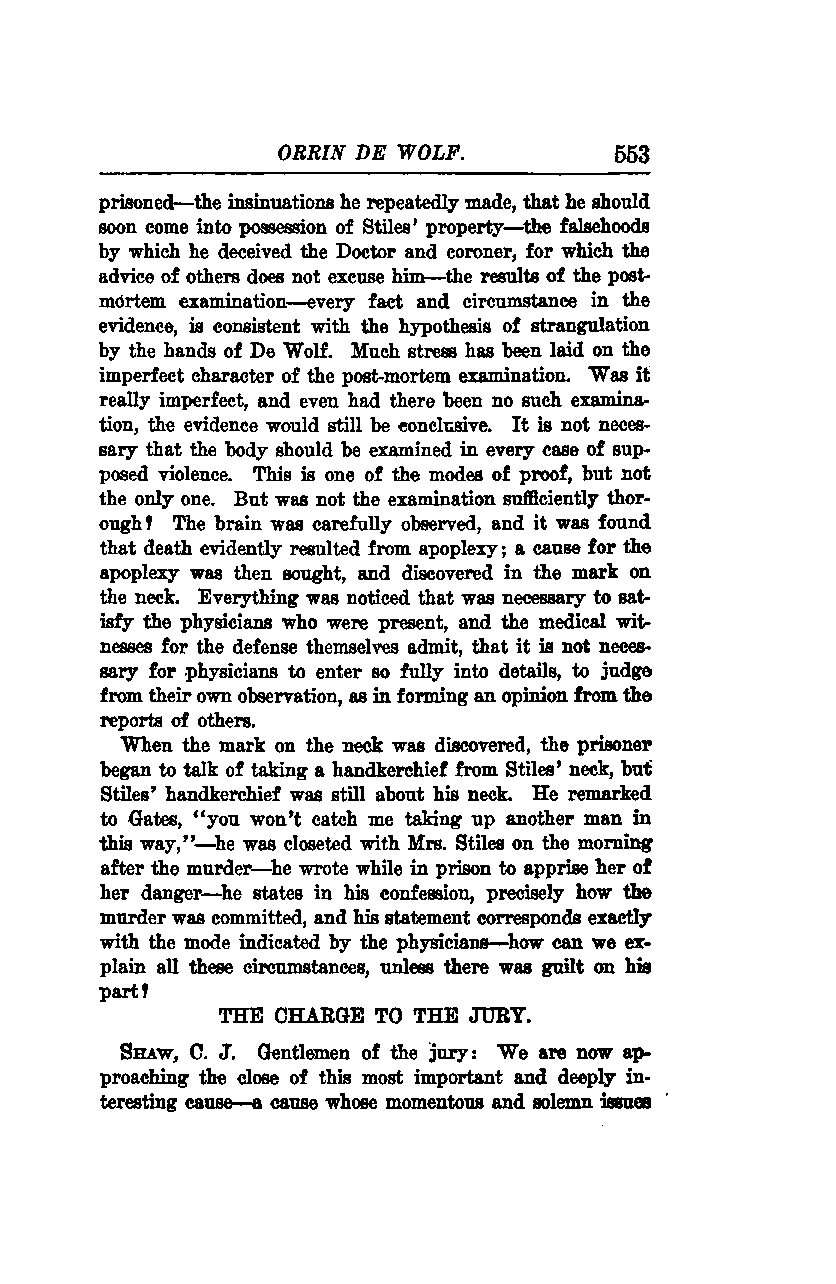Reading Time: 3 minutes [353 words]

Here is the translated text as follows:
ORRIN DE WOLF
Orrin De Wolf was imprisoned due to the insinuations he repeatedly made about soon coming into possession of Stiles' property, the falsehoods by which he deceived the Doctor and coroner (for which the advice of others does not excuse him), and the results of the post-mortem examination. Every fact and circumstance in the evidence is consistent with the hypothesis of strangulation by the hands of De Wolf. Much stress has been laid on the imperfect character of the post-mortem examination. Was it really imperfect? Even had there been no such examination, the evidence would still be conclusive. It is not necessary that the body should be examined in every case of supposed violence. This is one of the modes of proof, but not the only one. But was not the examination sufficiently thorough? The brain was carefully observed, and it was found that death evidently resulted from apoplexy; a cause for the apoplexy was then sought and discovered in the mark on the neck. Everything was noticed that was necessary to satisfy the physicians who were present, and the medical witnesses for the defense themselves admit that it is not necessary for physicians to enter so fully into details to judge from their own observation, as in forming an opinion from the reports of others.
When the mark on the neck was discovered, the prisoner began to talk of taking a handkerchief from Stiles' neck, but Stiles' handkerchief was still about his neck. He remarked to Gates, "You won't catch me taking up another man in this way." He was closeted with Mrs. Stiles on the morning after the murder, wrote while in prison to apprise her of her danger, and stated in his confession precisely how the murder was committed. His statement corresponds exactly with the mode indicated by the physicians. How can we explain all these circumstances unless there was guilt on his part?
THE CHARGE TO THE JURY
Shaw, C. J.: Gentlemen of the jury, we are now approaching the close of this most important and deeply interesting cause—a cause whose momentous and solemn issues...
---